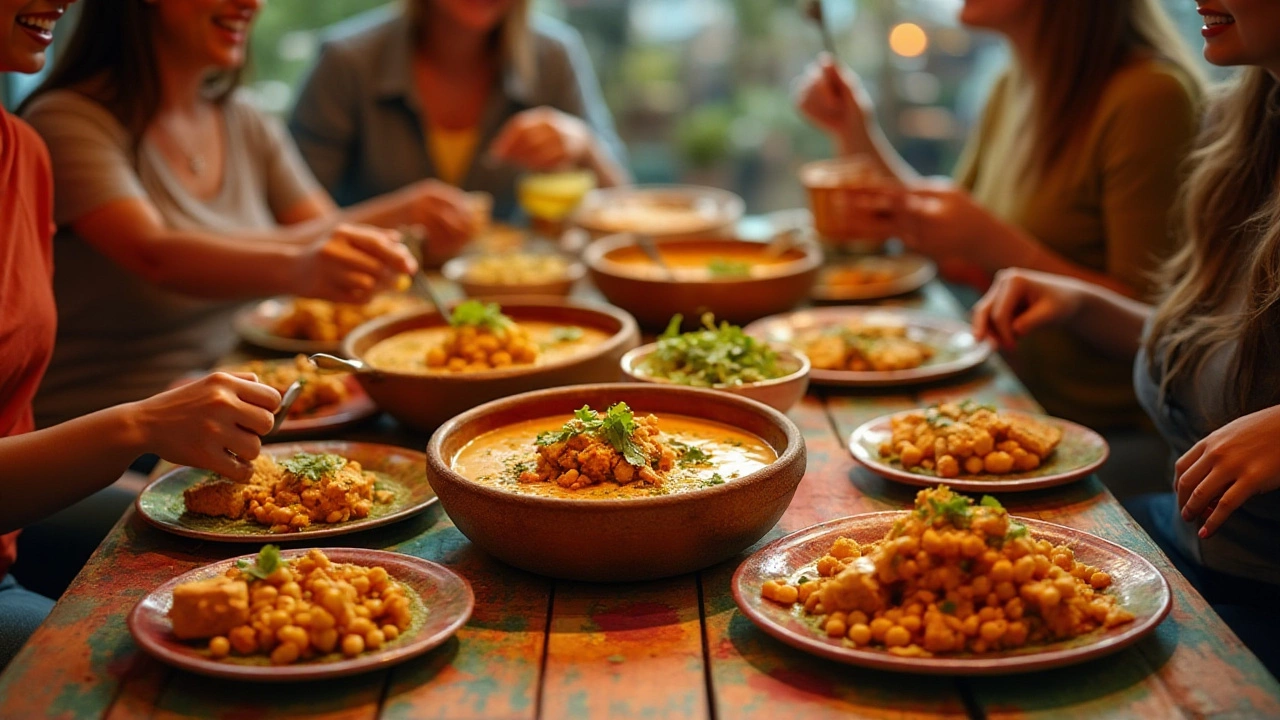Healthy Indian Food Made Simple: Real Tips for Real Kitchens
If you love the bold spices of India but worry about calories, you’re not alone. The good news? You don’t have to ditch the flavor to eat clean. A few smart swaps and ingredient tweaks can turn a classic dish into a nutrition powerhouse without losing that comforting taste.
Smart Swaps for Classic Favorites
Take a look at your go‑to meals. Do you reach for aloo paratha or butter‑laden naan? Try swapping white flour for whole‑grain atta or using a thin whole‑wheat roti instead of deep‑fried breads. For creamy curries, replace heavy cream with low‑fat yogurt or coconut milk—still rich, but lighter on the gut.
Even street‑food staples can be tweaked. Instead of fried pakoras, grill the veggies after a light coating of chickpea flour. The result is a crunchy bite with far fewer bad fats. Our post on "Best Indian Curries for Weight Loss" shows exactly how to cut oil and add protein‑rich lentils for a filling meal.
If you’re craving sweets, choose options that use jaggery or dates instead of refined sugar. The "Which Indian Sweet Is Healthy?" article breaks down low‑glycemic treats that satisfy cravings without spiking blood sugar.
Powerful Ingredients to Boost Nutrition
Spices aren’t just about flavor; many are metabolism boosters. Turmeric, cumin, and mustard seeds have anti‑inflammatory properties. Toss a pinch into your daily dal for an extra health kick. Speaking of dal, the "What Do Americans Call Dal?" guide explains how to cook it with a splash of lemon juice to improve iron absorption.
Vegetables like spinach, bottle gourd, and bitter gourd add fiber and micronutrients without adding calories. Pair them with a lean protein—grilled chicken tandoori (ask yourself, "Is Tandoori Chicken Safe for Diabetics?" for a low‑carb option) or paneer made at home to keep the dish balanced.
When ordering out, the "Healthiest Indian Food to Order" post suggests picking grilled kebabs, tandoori veggies, and a bowl of clear rasam. Skip the heavy naan and ask for a side of mixed salad instead.
Lastly, stay mindful of portion sizes. Even a healthy dish can become a calorie bomb if you overeat. Use the visual cue of a palm‑sized protein portion, a fist of veggies, and a cupped hand of carbs.
Putting these ideas into practice is easier than you think. Start with one swap—maybe replace white rice with cauliflower rice in your next biryani attempt. Then add a spice boost and watch the flavors shine. Before long, you’ll be enjoying authentic Indian meals that support your health goals, not sabotage them.
Discover the Healthiest Indian Dishes to Enjoy at Restaurants
Indian cuisine is renowned for its vibrant flavors and diverse dishes, offering a range of healthy options that cater to various dietary preferences. By understanding the ingredients and preparation methods, one can select meals that are not only delicious but also nutritious. This article delves into what makes certain dishes stand out in terms of health benefits, guiding you through making informed choices the next time you dine at an Indian restaurant.
